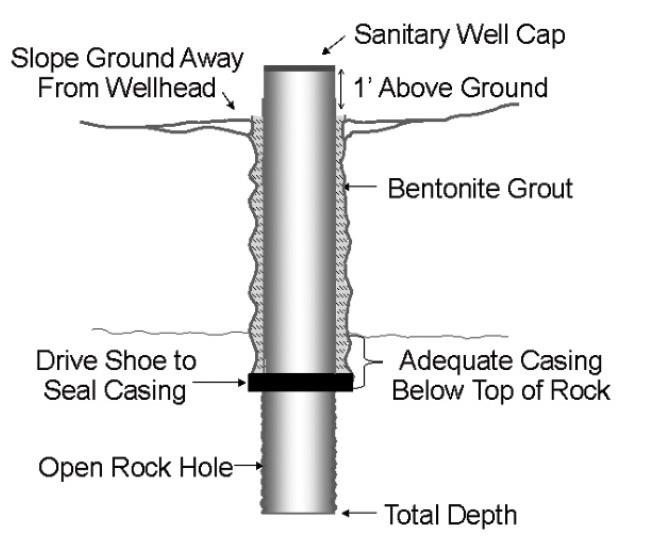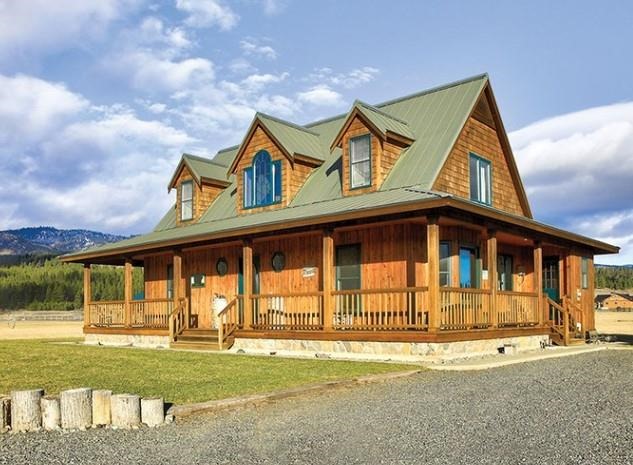By Bryan Swistock
Selecting Your Well Location
If you are building a new home or drilling a new well, determining the proper location for the well is an important decision that can protect the health of you and your family. It is important that you understand the topography of your property and the direction of your groundwater flow, and that you have identified all potential pollution risks in the surrounding area
- Wells should be at least 25 feet from a silo.
- Wells should be located at least 50 feet from sewers and septic tanks.
- Wells should be at least 100 feet from pastures, on-lot sewage system absorption fields, cesspools, and barnyards.
- Avoid locating a well where groundwater comes to within 10 feet of the soil surface.
Selecting a Well Driller
To ensure your well will be located and constructed properly, it is critical that you exercise caution when hiring a well driller. Use the following criteria to help you find a driller that is right for you:
- Find out if the contractor is certified by the National Ground Water Association.
- Check to see that the contractor has adequate equipment.
- Use a contractor that submits well logs and will supply you with a written contract.
What You Need in a Contract
- Assurance of compliance with regulations
- Liability insurance information for driller
- Casing specifications (minimum of 4 inches to bedrock)
- Sanitary well cap and grout seal included
- Well development to maximum yield
- Disinfection after drilling and pump installation
- Itemized cost estimate
- Estimate of well yield
- Delivery of well log and pump test results
Well Construction
Poor water quality is often a direct result of an improperly constructed well. For the health of your family, it is important to take the necessary steps to ensure your well is constructed properly from the start so that you do not encounter any water quality problems in the future.

Illustration: Stephanie Clemens
Components of Properly Constructed Well
- Well casings should be at least 8 inches above the ground or high enough that surface water will never enter the well (even in times of flood).
- The ground should slope away from the well to prevent surface water from ponding.
- A sanitary well cap should be used at the top of the casing to prevent insects, small mammals, and other surface contaminants from entering the well.
- A pitless adapter should be used where the water pipe passes through the well casing below the frost depth.
- To prevent surface water contamination, the space between the well casing and the drill hole should be filled with a clay grout or cement.
Before the well construction is complete, make sure to receive a water yield and also have the system disinfected using shock chlorination.
Before Buying a New Home
Typically, the last thing you think about when buying an existing house is where the water supply comes from. However, for the safety of your family, it is very important to learn about the resources surrounding the home you intend to buy. When buying a home in a rural area, there may be more challenges in trying to determine potential threats to the water supply. Water quantity and quality are both issues to research before purchasing a home in the country. If you buy a home in a rural community that relies on well water, find out how old the well is, what type of well it is, where it is located, and if it is properly sealed, and determine all potential contaminants to that well. For added protection, also make sure the means of disposing wastewater is safe.
Regardless of where you are looking to purchase a home, knowing past land use practices and locating the water supply and septic system are critical for making a good decision for the health of your family.

Photo credit: Bigstockphoto.com
Source Water Protection Starts at Home
Over three million people in Pennsylvania get their water from a private water system (well, spring, or cistern). Families on private water supplies need to be aware of changing water quality issues and the best methods to protect their water supply. Unlike public drinking water systems, homeowners with private wells do not have assistance with managing water supply (including routine maintenance, water testing, and solving water quality and quantity problems). All private water system owners need to take the time to ensure everything is working correctly and that their water is always healthy to drink.
Source : psu.edu